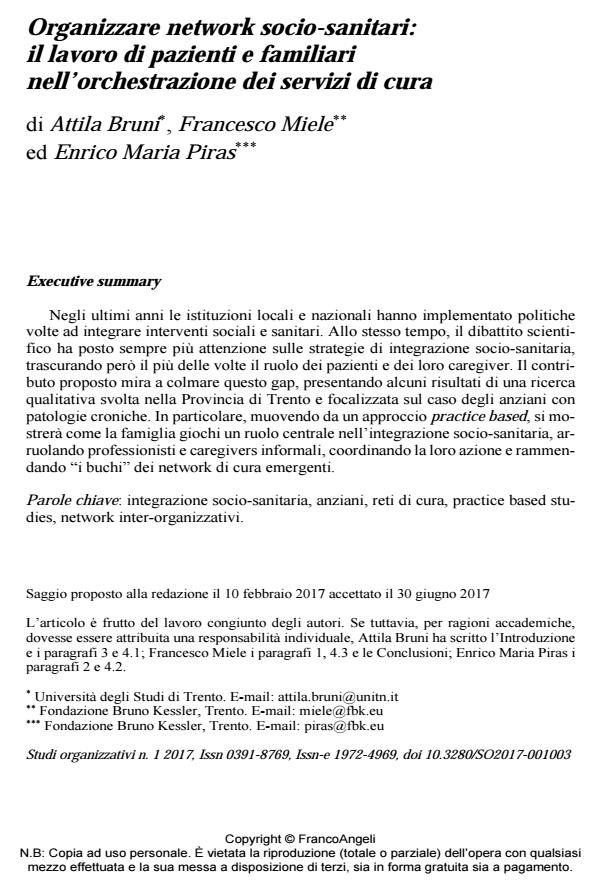Organizzare network socio-sanitari: il lavoro di pazienti e familiari nell’orchestrazione dei servizi di cura
Titolo Rivista STUDI ORGANIZZATIVI
Autori/Curatori Attila Bruni, Francesco Miele, Enrico Maria Piras
Anno di pubblicazione 2017 Fascicolo 2017/1
Lingua Italiano Numero pagine 22 P. 67-88 Dimensione file 237 KB
DOI 10.3280/SO2017-001003
Il DOI è il codice a barre della proprietà intellettuale: per saperne di più
clicca qui
Qui sotto puoi vedere in anteprima la prima pagina di questo articolo.
Se questo articolo ti interessa, lo puoi acquistare (e scaricare in formato pdf) seguendo le facili indicazioni per acquistare il download credit. Acquista Download Credits per scaricare questo Articolo in formato PDF

FrancoAngeli è membro della Publishers International Linking Association, Inc (PILA)associazione indipendente e non profit per facilitare (attraverso i servizi tecnologici implementati da CrossRef.org) l’accesso degli studiosi ai contenuti digitali nelle pubblicazioni professionali e scientifiche
Negli ultimi anni le istituzioni locali e nazionali hanno implementato politiche volte ad integrare interventi sociali e sanitari. Allo stesso tempo, il dibattito scientifico ha posto sempre più attenzione sulle strategie di integrazione socio-sanitaria, trascurando però il più delle volte il ruolo dei pazienti e dei loro caregiver. Il contributo proposto mira a colmare questo gap, presentando alcuni risultati di una ricerca qualitativa svolta nella Provincia di Trento e focalizzata sul caso degli anziani con patologie croniche. In particolare, muovendo da un approccio practice based, si mostrerà come la famiglia giochi un ruolo centrale nell’integrazione socio-sanitaria, arruolando professionisti e caregivers informali, coordinando la loro azione e rammendando "i buchi" dei network di cura emergenti.
Parole chiave:Integrazione socio-sanitaria, anziani, reti di cura, practice based studies, network inter-organizzativi.
Attila Bruni, Francesco Miele, Enrico Maria Piras, Organizzare network socio-sanitari: il lavoro di pazienti e familiari nell’orchestrazione dei servizi di cura in "STUDI ORGANIZZATIVI " 1/2017, pp 67-88, DOI: 10.3280/SO2017-001003